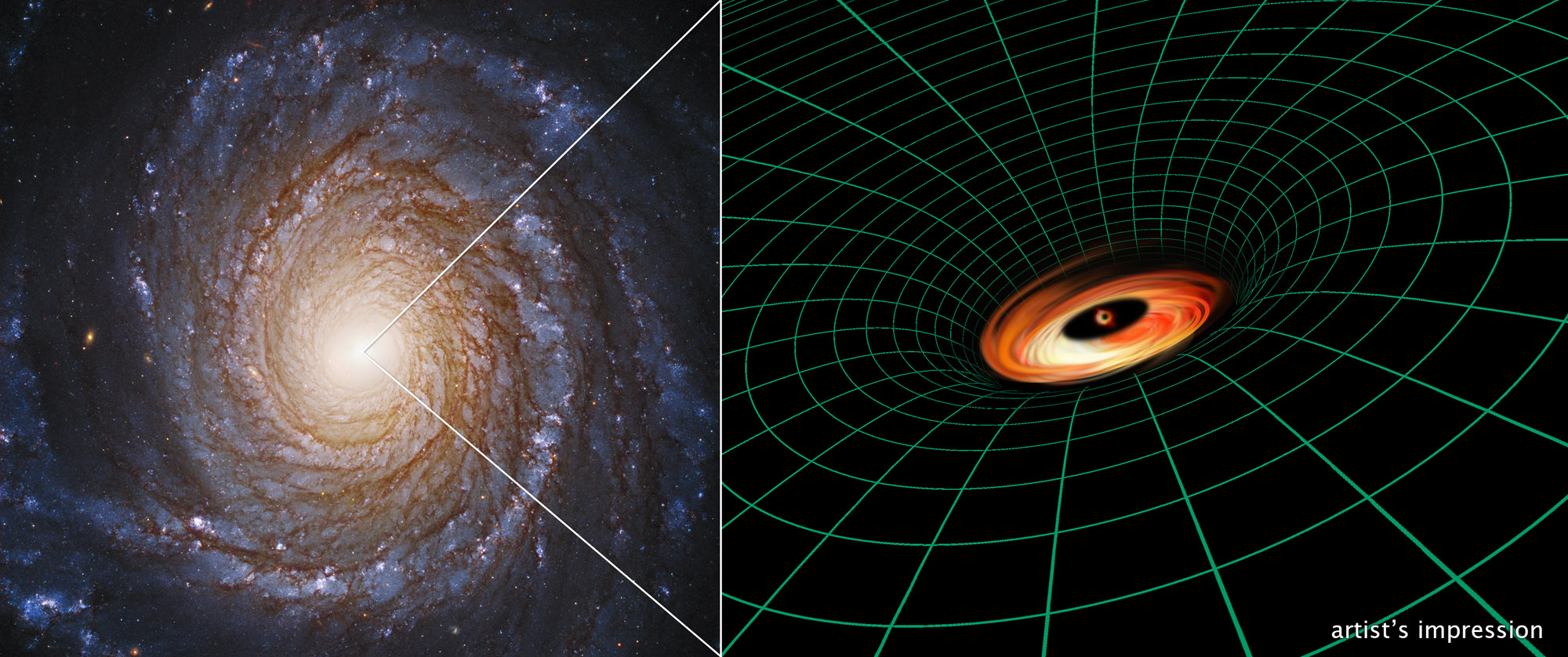Surprise! This Monster Black Hole's Disk Shouldn't Exist
Hubble observed this unexpected pairing at the center of a spiral galaxy.
Astronomers have discovered a thin disk of material spiraling into a supermassive black hole in a very faint galaxy — an unexpected finding that may provide further clues to the dynamic processes surrounding black holes.
Using the Hubble Space Telescope, astronomers observed the black hole at the center of the spiral galaxy NGC 3147, which is located around 130 million light-years away in the Draco constellation. Black holes in low-luminosity galaxies like NGC 3147 usually lack sufficient material captured by the galaxy's gravity to feed off of, and are therefore considered "starving," Hubble scientists said in a statement.
The researchers were surprised to find a thin disk encircling the black hole at the center of this galaxy, because the disk looks similar to the kinds of accretion disks that typically encircle black holes found in extremely active (and much brighter) galaxies.
Related: Images: Black Holes of the Universe
"The type of disk we see is a scaled-down quasar [a luminous galactic nucleus] that we did not expect to exist," Stefano Bianchi, an astrophysics professor at Roma Tre University in Italy and lead author of the study, said in the statement. "It's the same type of disk we see in objects that are 1,000 or even 100,000 times more luminous."
The disk is so deeply embedded in the black hole's gravitational field, according to the study, that the light being emitted from the gas disk is altered by the intense gravitational pull. Hubble measured the disk spinning around the black hole at more than 10% of the speed of light, causing it to brighten as it moves toward Earth and dim when it moves away from our planet.
This process is known as relativistic beaming, whereby relative effects alter the luminosity of matter moving at speeds close to the speed of light.
Breaking space news, the latest updates on rocket launches, skywatching events and more!
"This is an intriguing peek at a disk very close to a black hole," Bianchi said. "So close that the velocities and the intensity of the gravitational pull are affecting how we see the photons of light."
Scientists can use these observations to test Albert Einstein's theories of relativity, which explain how gravity can warp light, as the light coming from the center of this disk appears warped. The resulting distorted images we see could provide unique insights to the way light and matter behave so close to a black hole, according to the statement.
The team behind the study had originally picked this galaxy to observe in order to validate known models of low-luminosity active galaxies with starving black holes at their center. But NGC 3147 defied those models, and now scientists are on the hunt to find other similar accretion disks surrounding these "malnourished" black holes in low-luminous galaxies.
"The predictions of current models for very faint active galaxies clearly failed," Bianchi said.
The new paper was published online July 11 in the Monthly Notices of the Royal Astronomical Society.
- This Tiny Galaxy Has a Pretty Big Black Hole
- The Milky Way's Monster Black Hole Has a Cool Gas Halo
- Strange Black Hole Galaxies Could Reveal Quasar Secrets
Follow Passant Rabie on Twitter @passantrabie. Follow us on Twitter @Spacedotcom and on Facebook.

Passant Rabie is an award-winning journalist from Cairo, Egypt. Rabie moved to New York to pursue a master's degree in science journalism at New York University. She developed a strong passion for all things space, and guiding readers through the mysteries of the local universe. Rabie covers ongoing missions to distant planets and beyond, and breaks down recent discoveries in the world of astrophysics and the latest in ongoing space news. Prior to moving to New York, she spent years writing for independent media outlets across the Middle East and aims to produce accurate coverage of science stories within a regional context.


